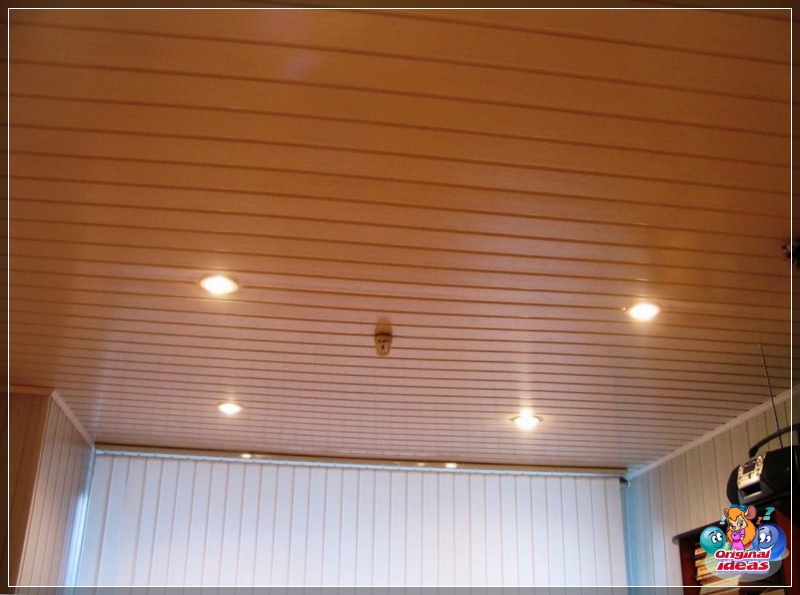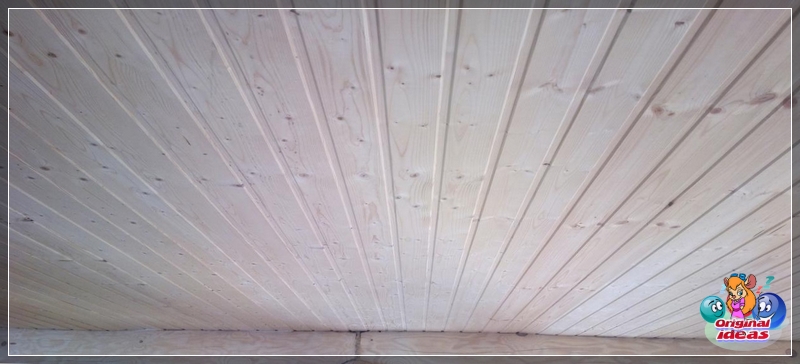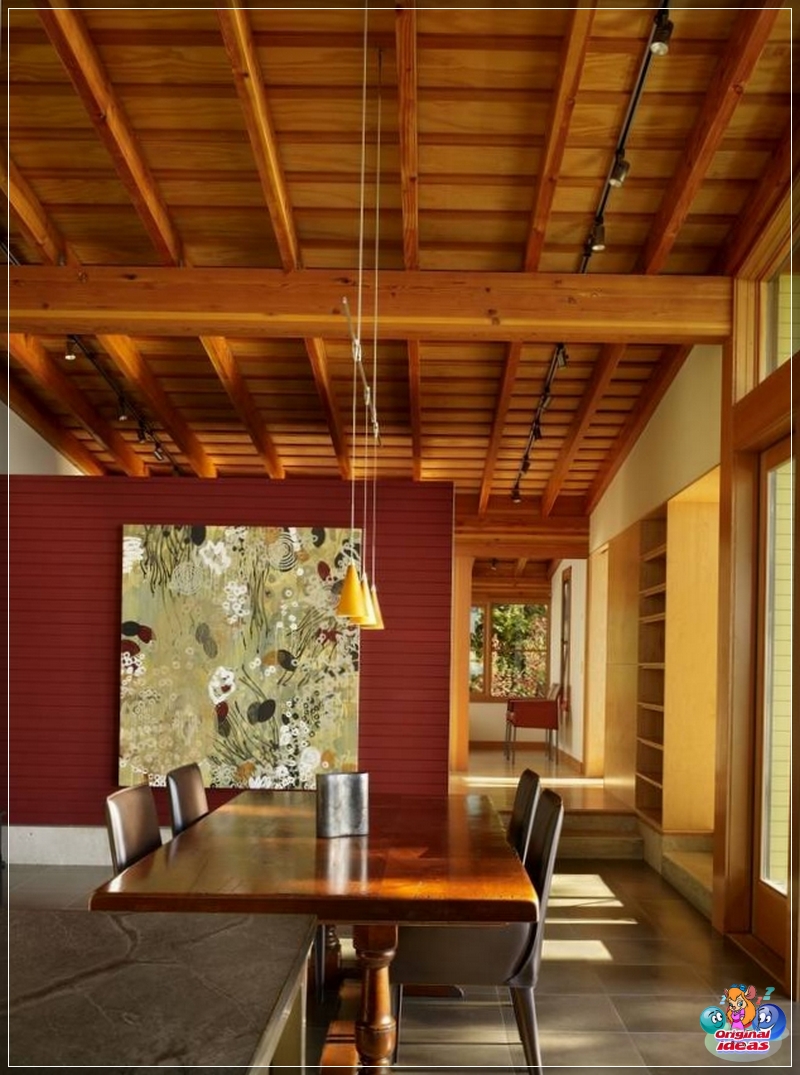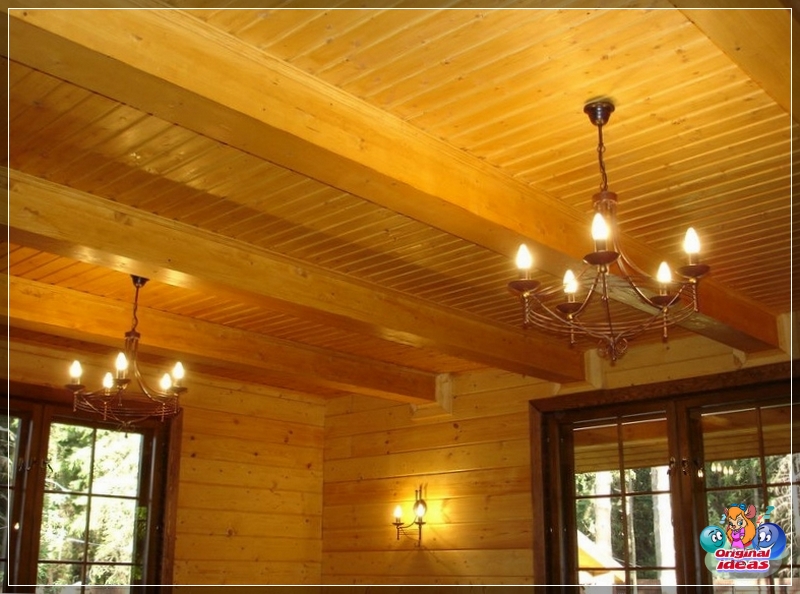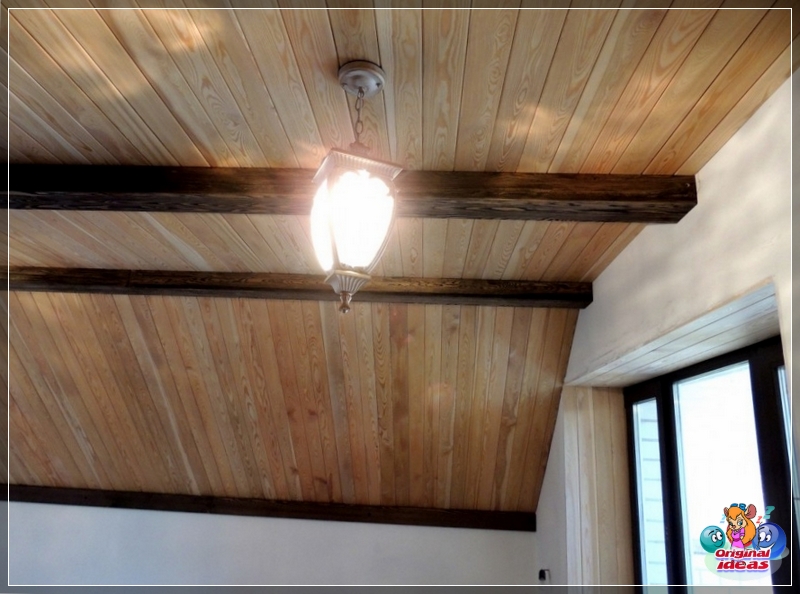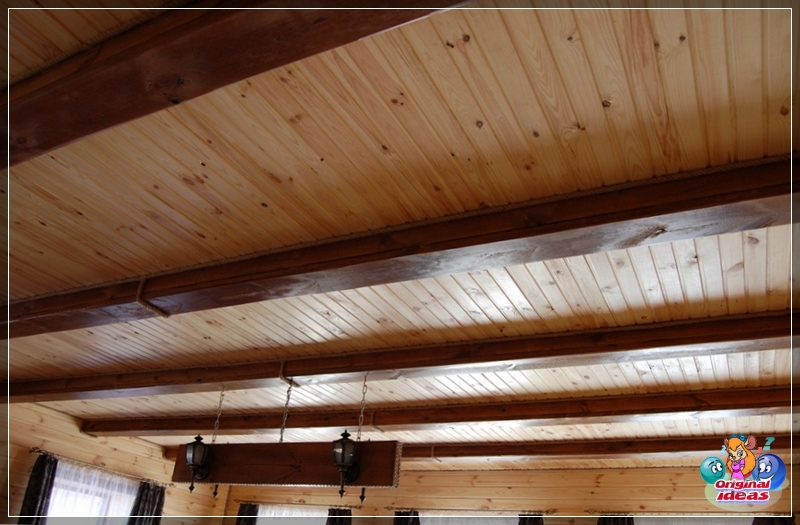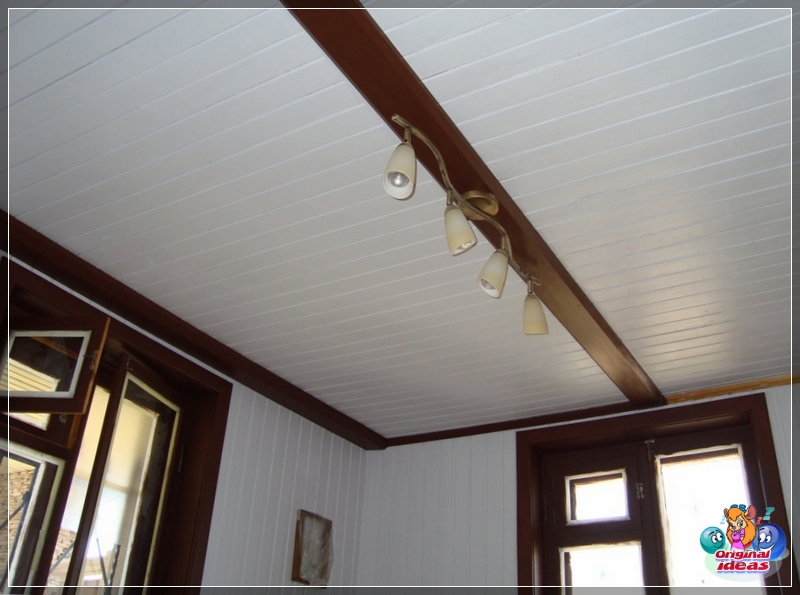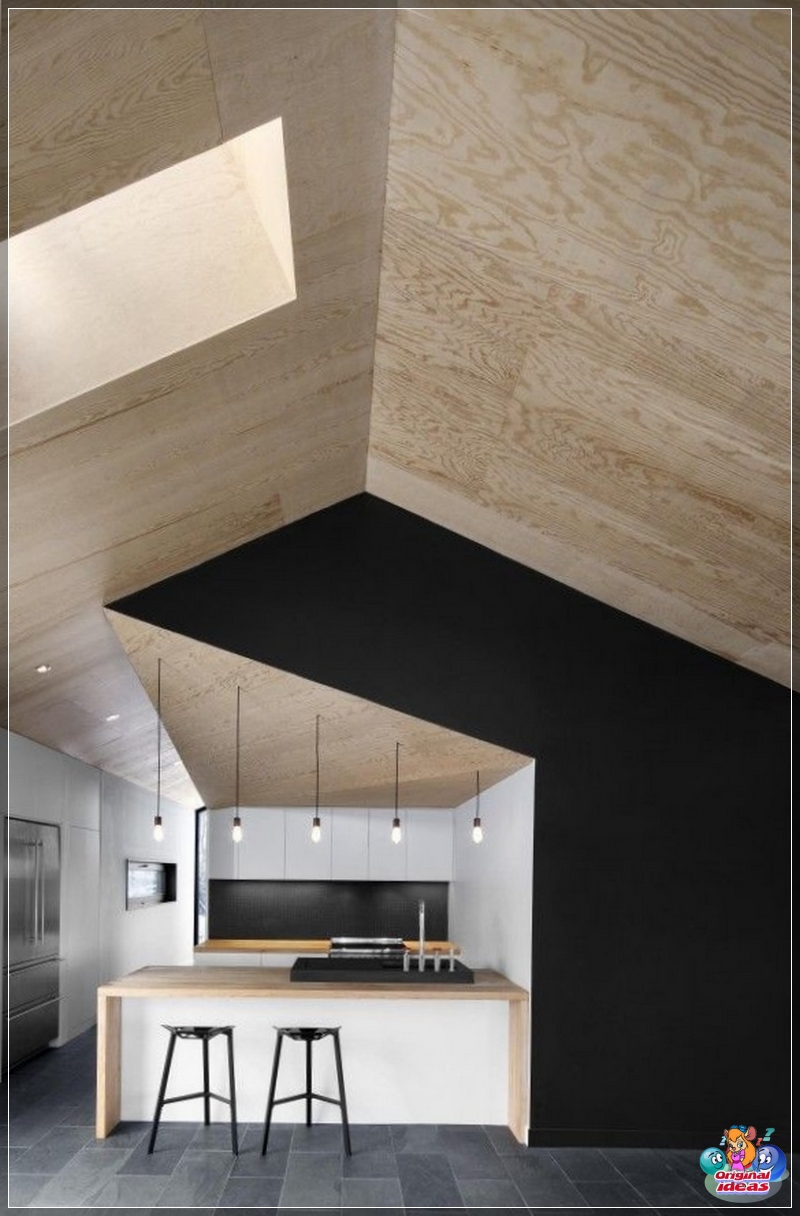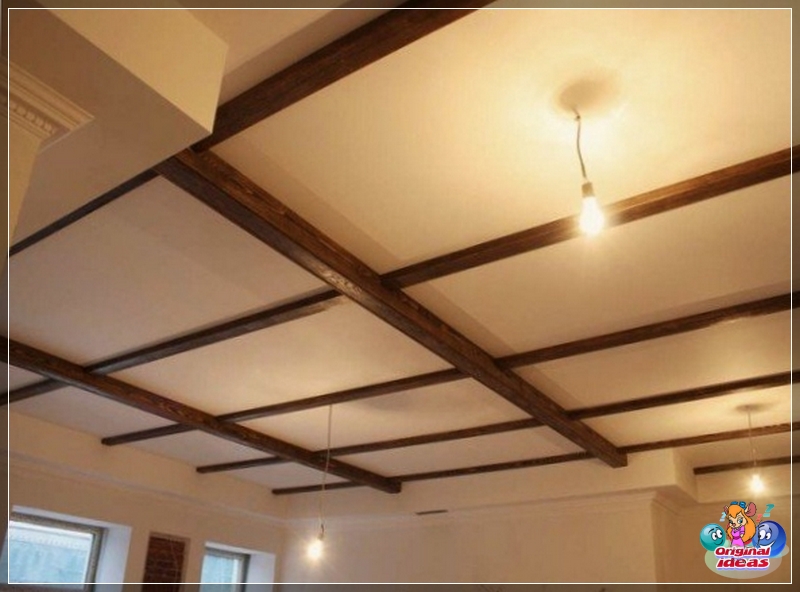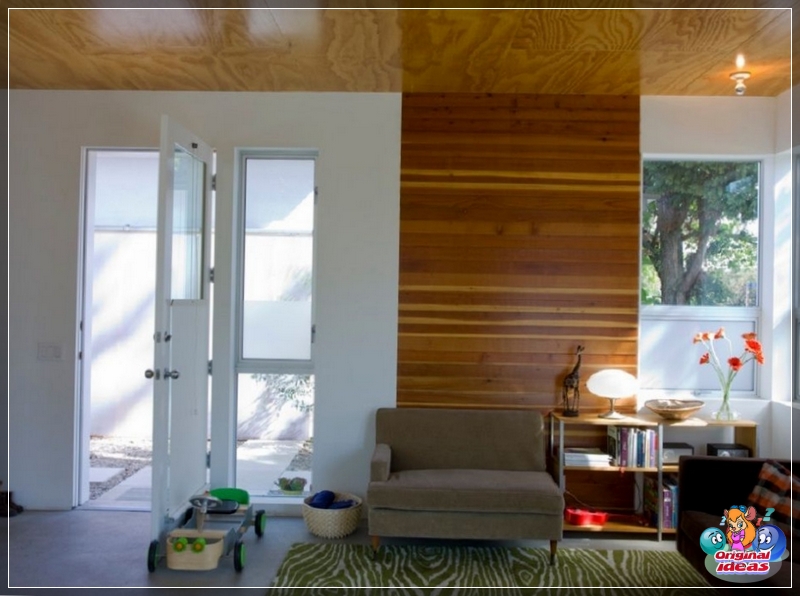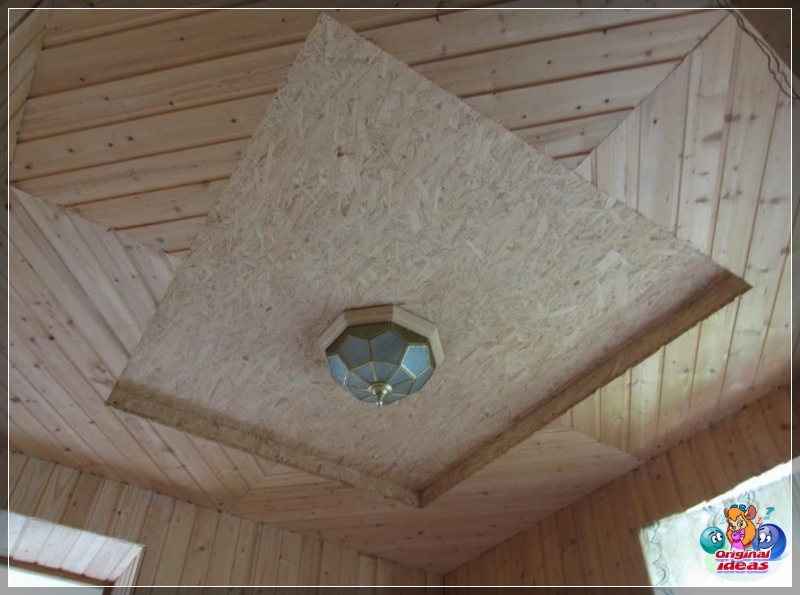
Wooden ceiling is popular in the design of apartments and country houses. Wood is a technological, affordable and attractive finishing material at an affordable price. When creating modern wood ceilings, centuries-old traditions are preserved and new technologies and materials are used.
Features of wooden ceilings
When choosing wood for finishing ceilings, you should consider all the pros and cons. The positive qualities of this material:
The main disadvantage of wooden ceilings is that in humid and warm rooms they are not resistant to rotting and mold formation, so the material must be impregnated with special antiseptic agents.
Wood is a combustible material and fire prevention measures are mandatory.
A wooden ceiling can be made in any living space - in an apartment, in a private house, in the country. It looks harmoniously in wooden houses. However, even in urban high-rise buildings, such a ceiling will not lose its attractiveness. It can be mounted on timber floors with beams or reinforced concrete slabs.
Design features
Types of structures:
The use of a suspension system has important advantages. It is suitable for any type of flooring, does not require special preparation of the base. Inside the frame, you can place communication elements and electrical wiring. Creates the possibility of forming a multi-level ceiling and surfaces of an unusual shape. The main disadvantage is a noticeable decrease in the real height of the room.
Coffered ceilings stand out as a special type. They are characterized by an original surface shape. Various convex shapes are formed on the ceiling (tent, hemisphere, etc.).NS.) and grooves. The design uses beams, borders, stucco moldings.
Varieties of materials
Various types of finishing materials are made from wood, used for finishing ceilings.
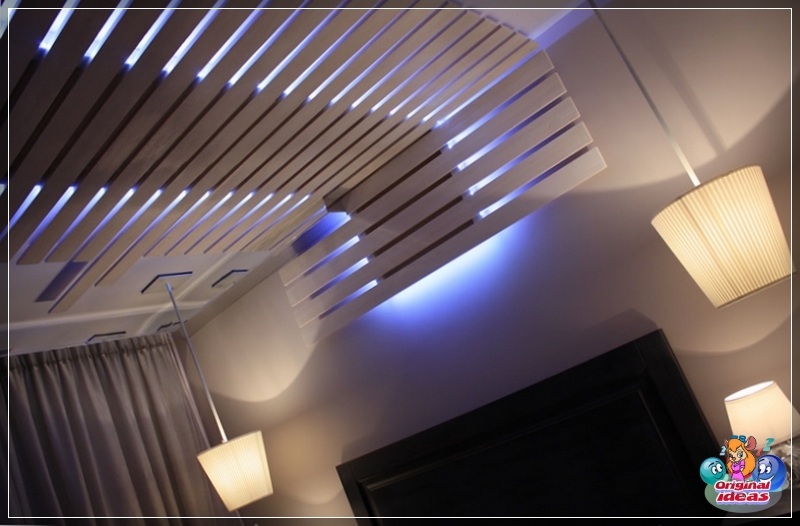
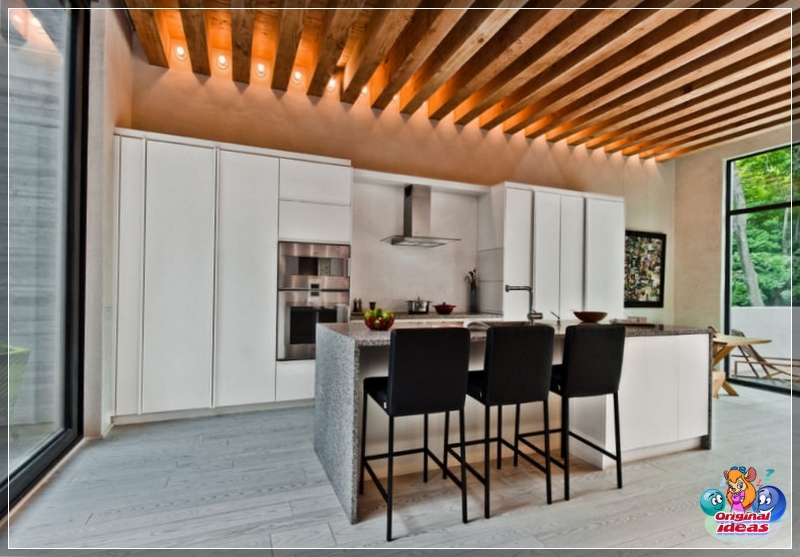
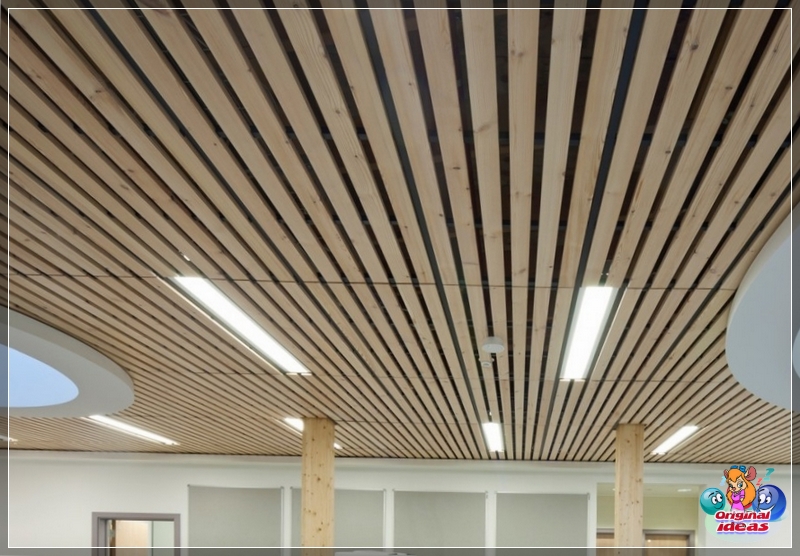
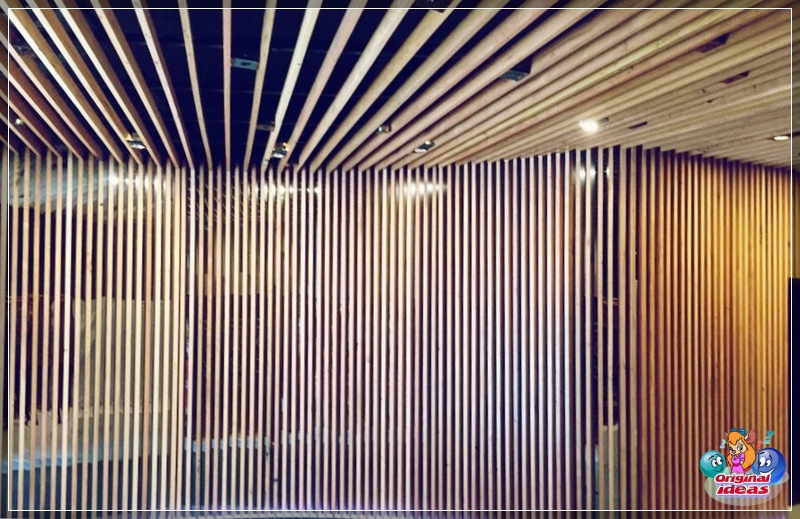
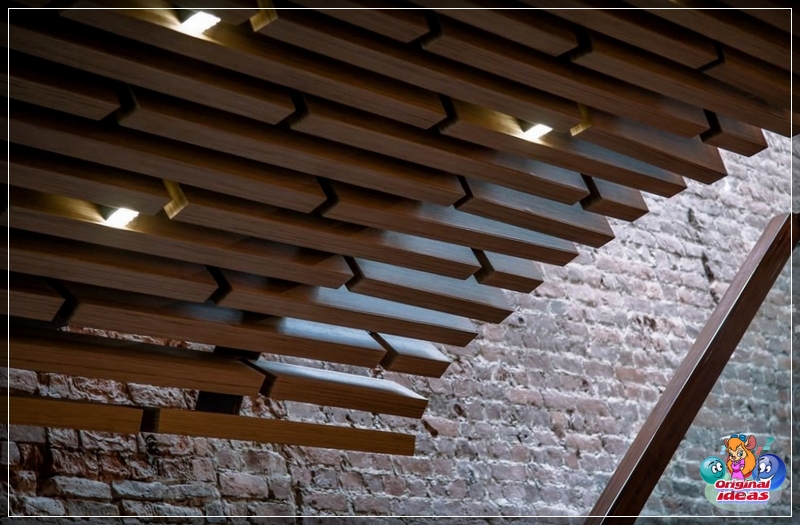

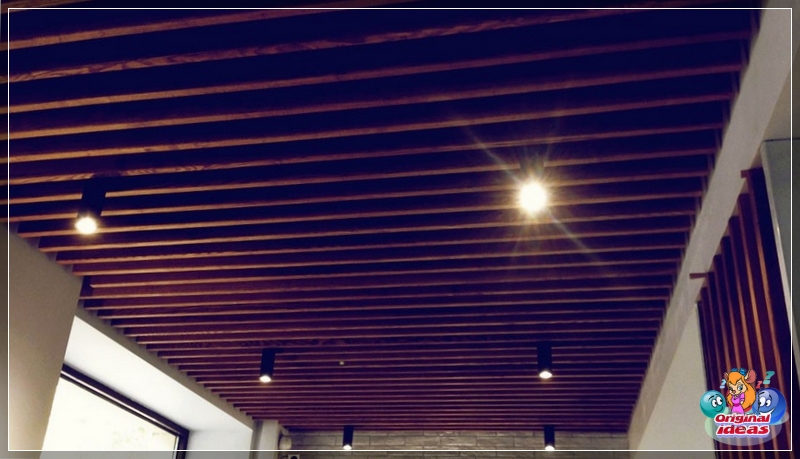
Reiki as a finishing material
Wooden slatted ceiling is made of slats, which can be of different widths, lengths and thicknesses. Both elements with clear, rectangular sections and bevelled strips are used. The slats can be installed close to each other or with a gap. They are attached to the crate with self-tapping screws or nails.
Clapboard sheathing
The material is made of natural wood, processed in an industrial environment, with standard dimensions (length 1.5-2.5 m, width 7-15 cm, thickness 1-2.5 cm). To connect the strips to each other from the side, a longitudinal tongue is formed on them on one side, and on the other, a corresponding groove.
The cost and quality of products depends on the category:
During installation, different methods of laying the lining can be used: parallel rows in one direction, multidirectional arrangement, block formation, etc.NS., with its help you can make ceiling zoning. Fastening is carried out similarly to rails.
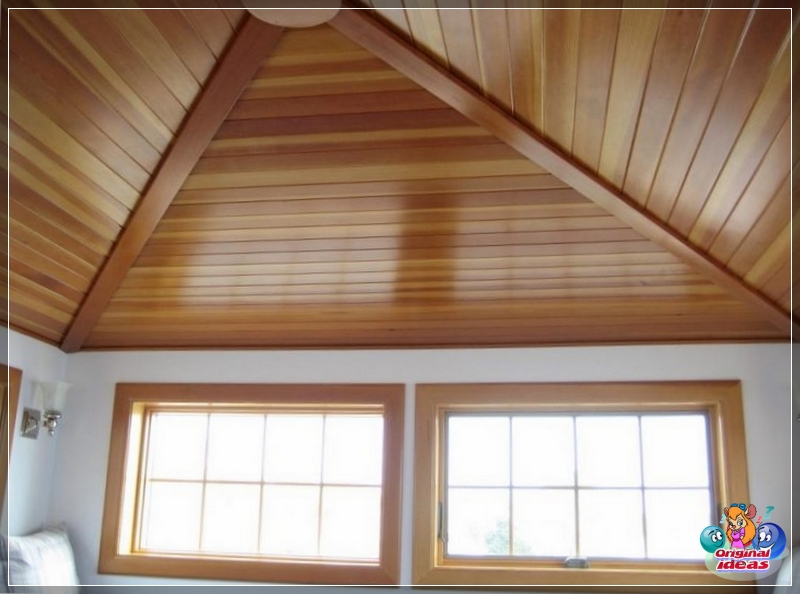

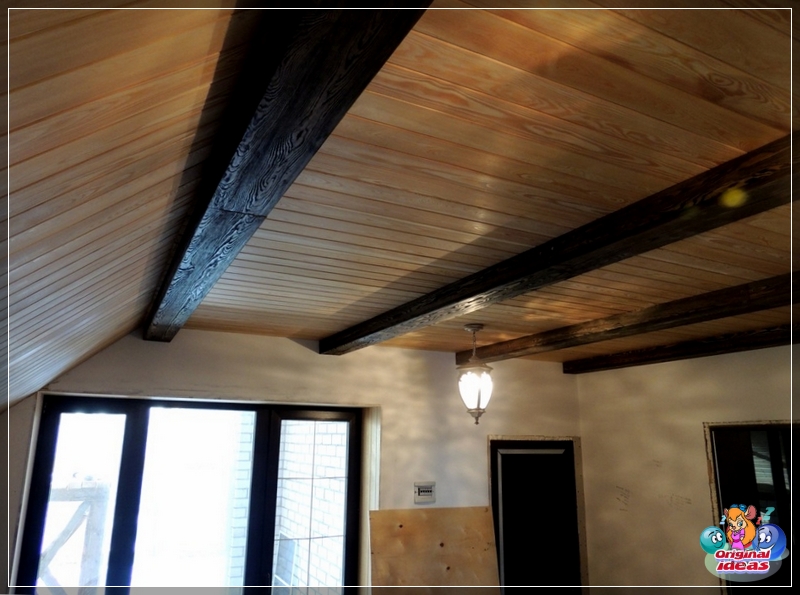
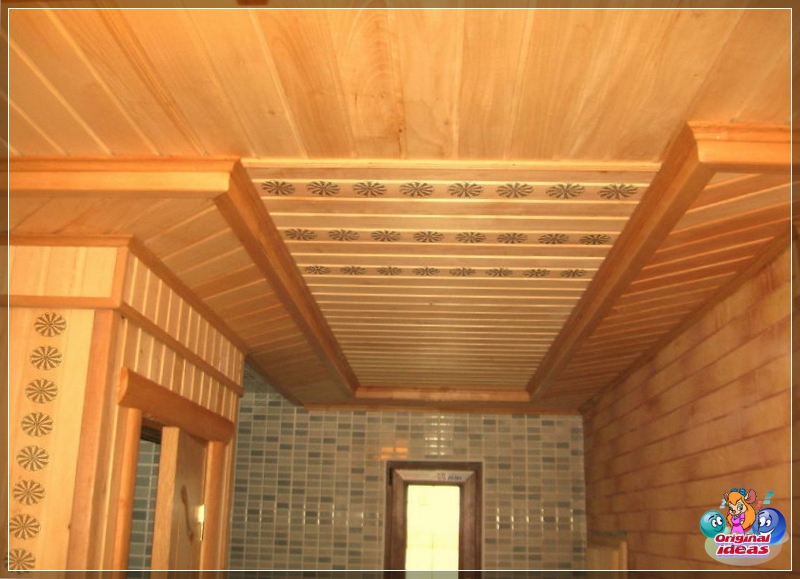
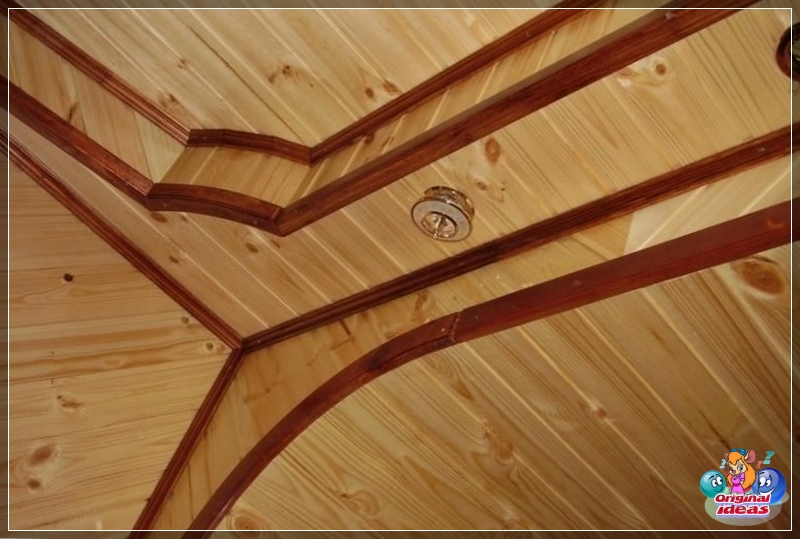
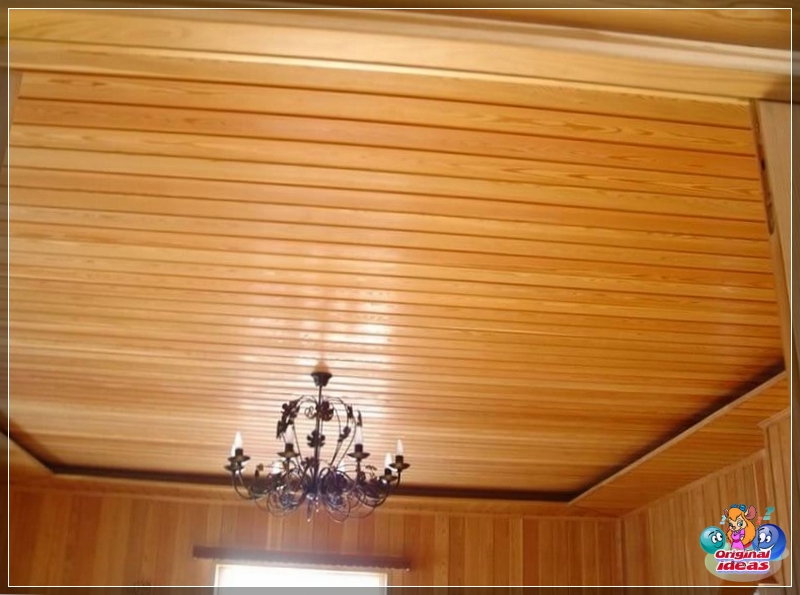
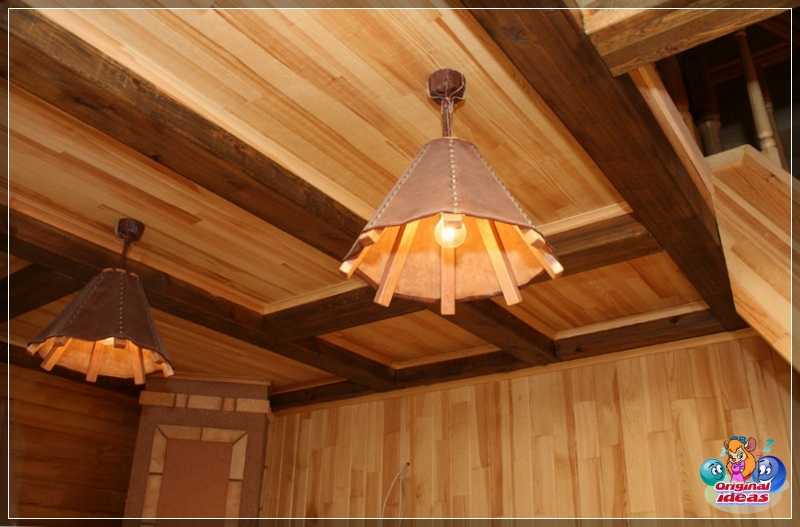
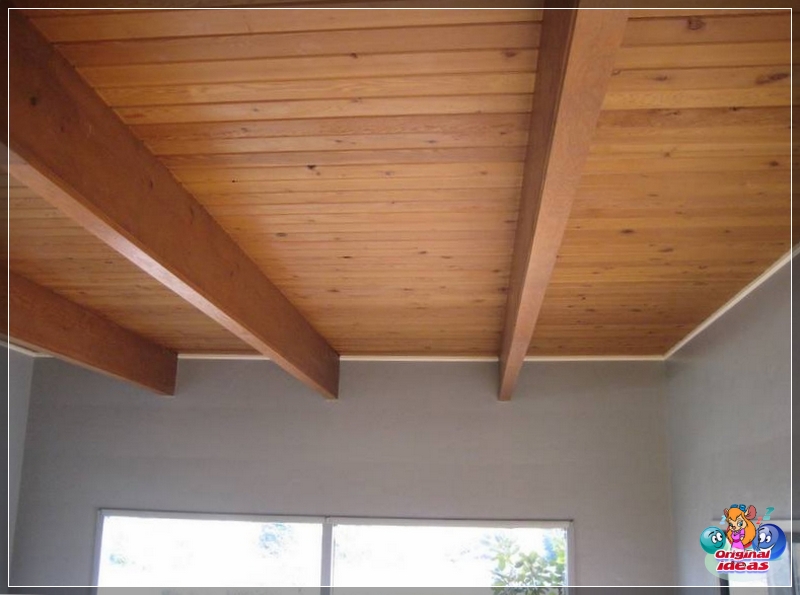

Board ceiling
For such a design, an edged, well-processed board with a width of 10 to 30 cm, a thickness of 2.5-4 cm is used. Boardwalk can be attached to battens or floor joists. The main disadvantage is drying out, which can cause the formation of cracks. To exclude it, use well-dried wood.
Plywood sheathing
Most often used for rough ceilings, but high quality plywood is also successfully used for exterior decoration. For these purposes, an option with a top layer of alder, maple or birch with a sanded surface is suitable. The appearance can be improved by decorating with patterns, patterns, inserts.
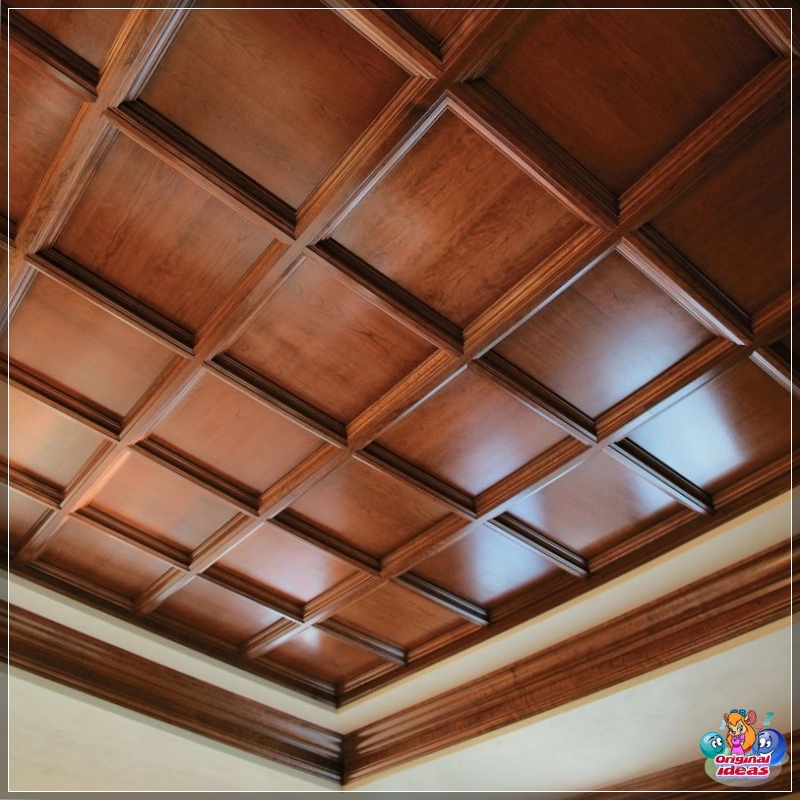
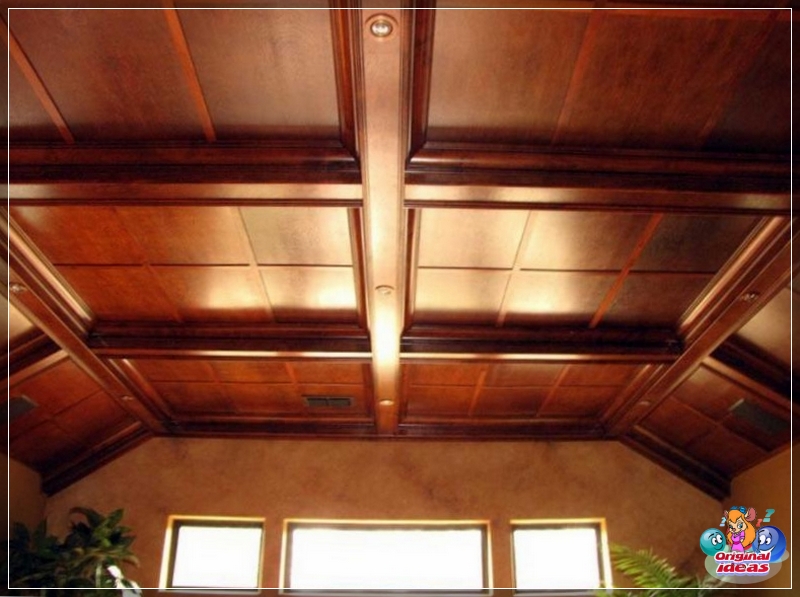
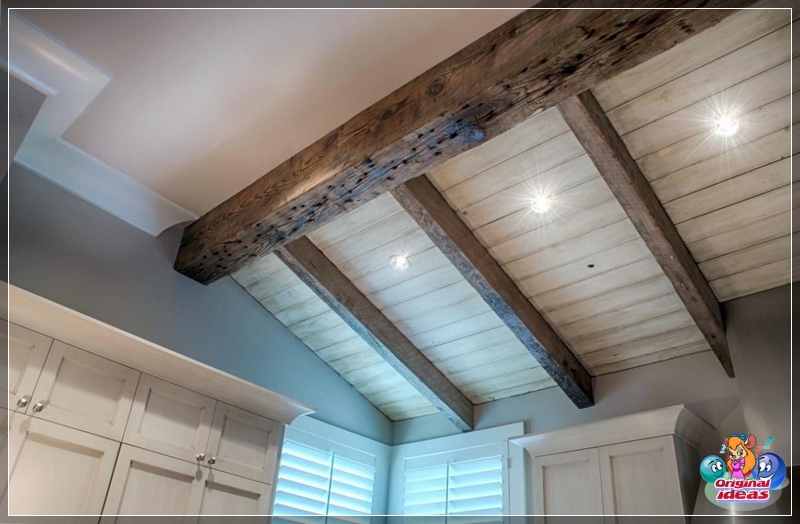
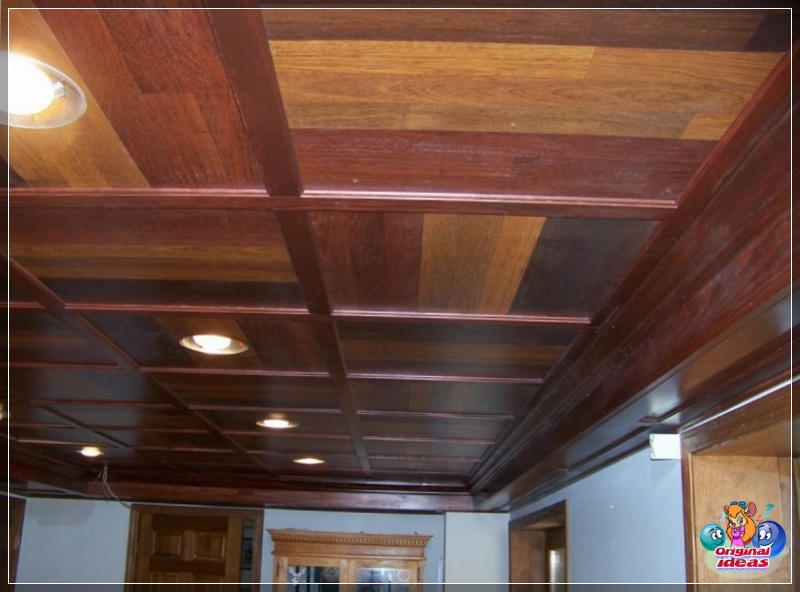

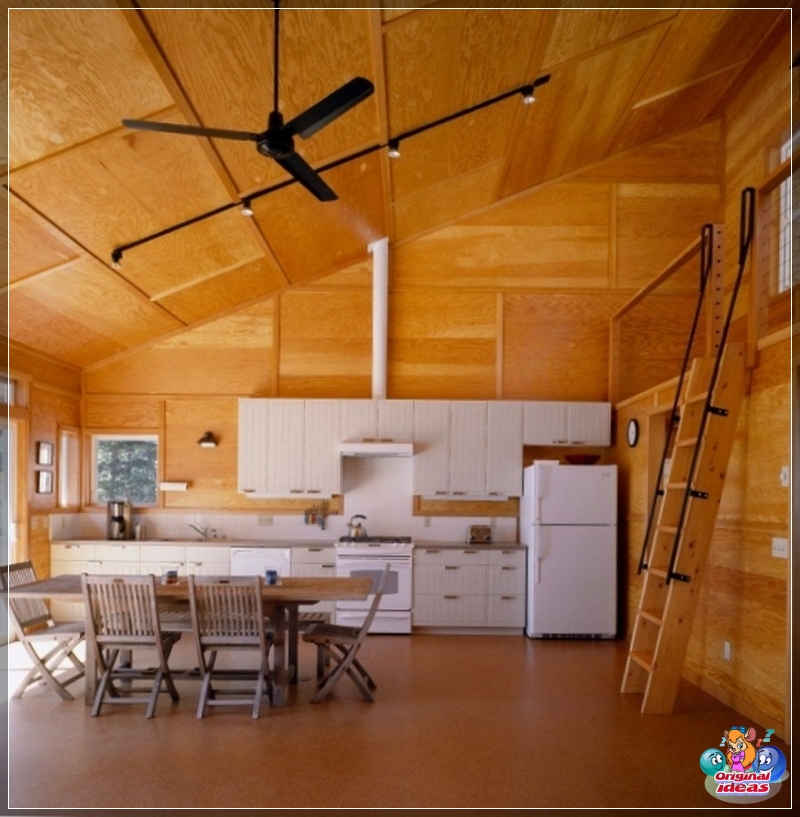
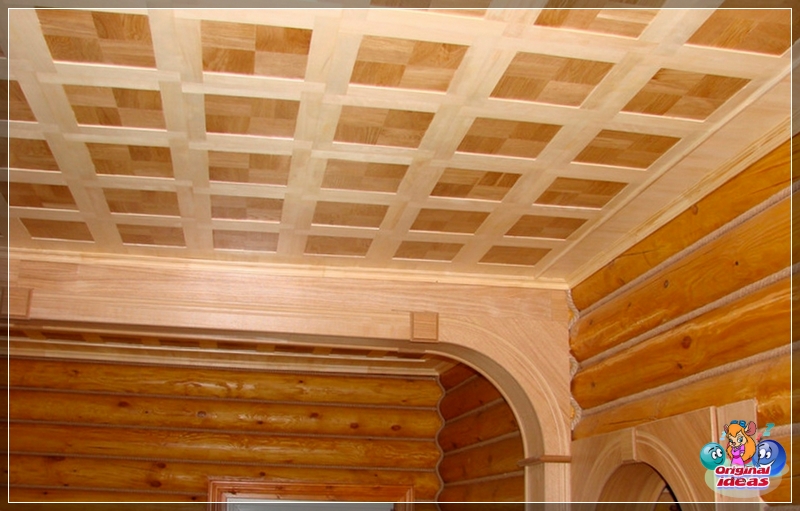


Cladding with panels
The following options are offered for ceilings:
False beams are sometimes used when creating a ceiling. They do not perform a load-bearing function, but in combination with other types of products create an original interior.

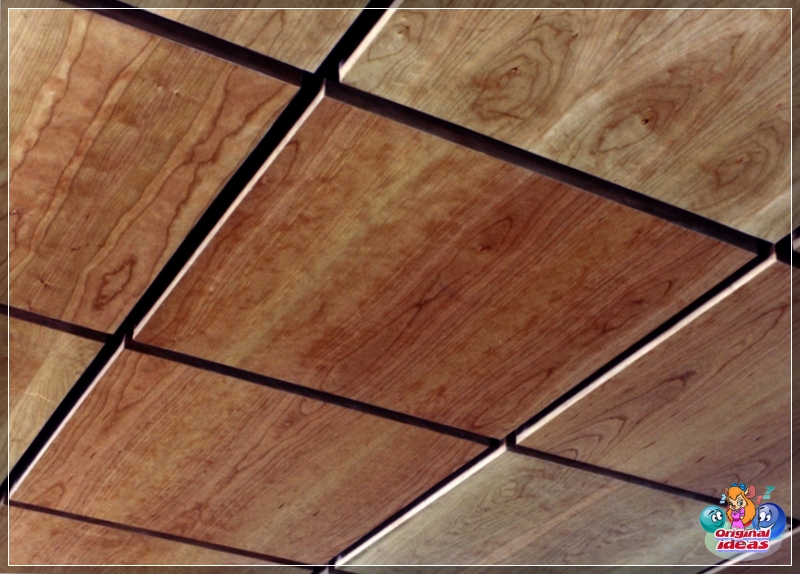
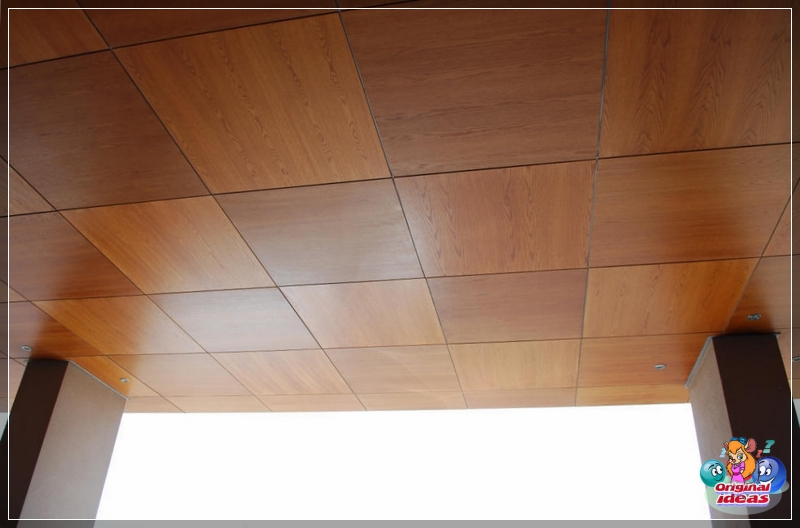
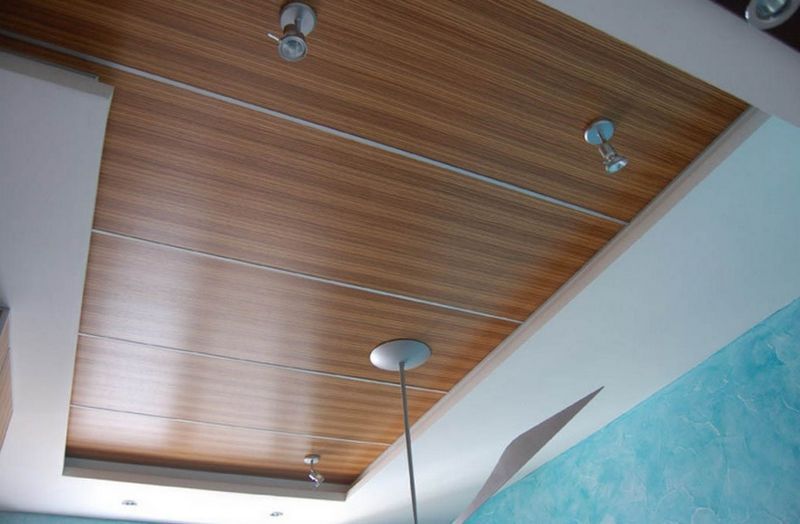
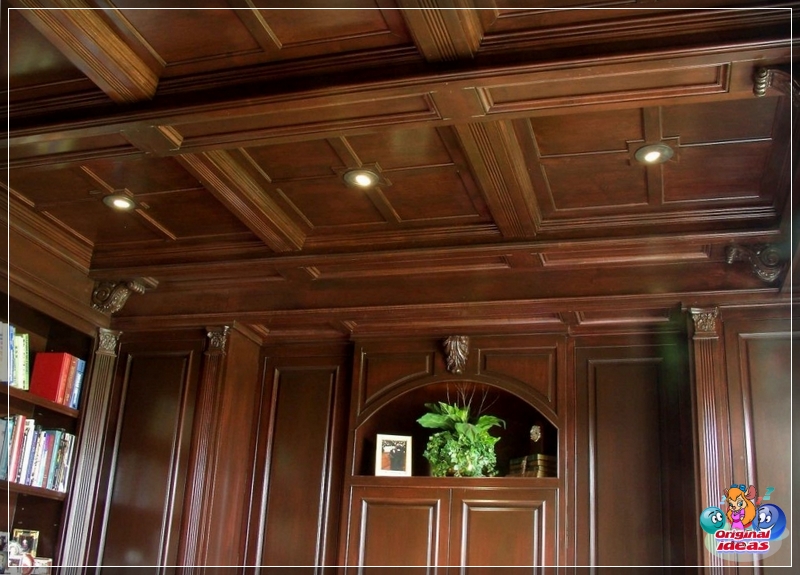


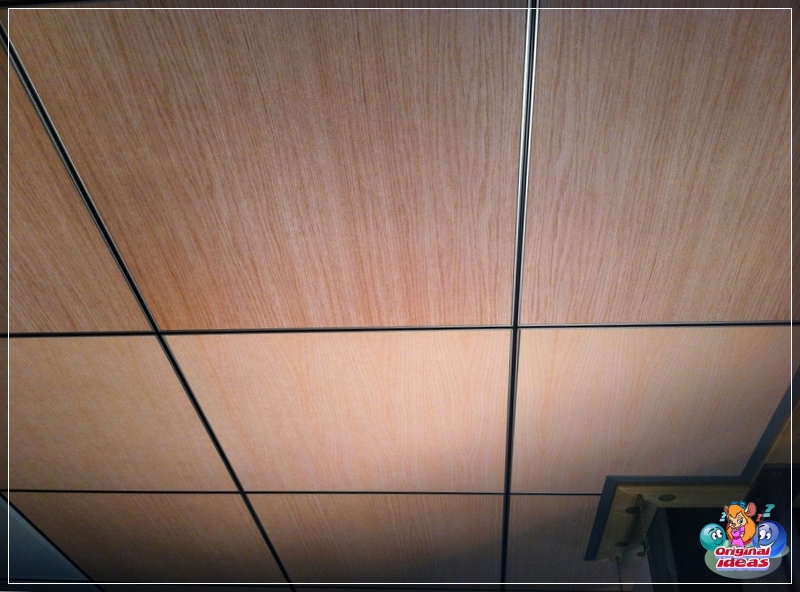
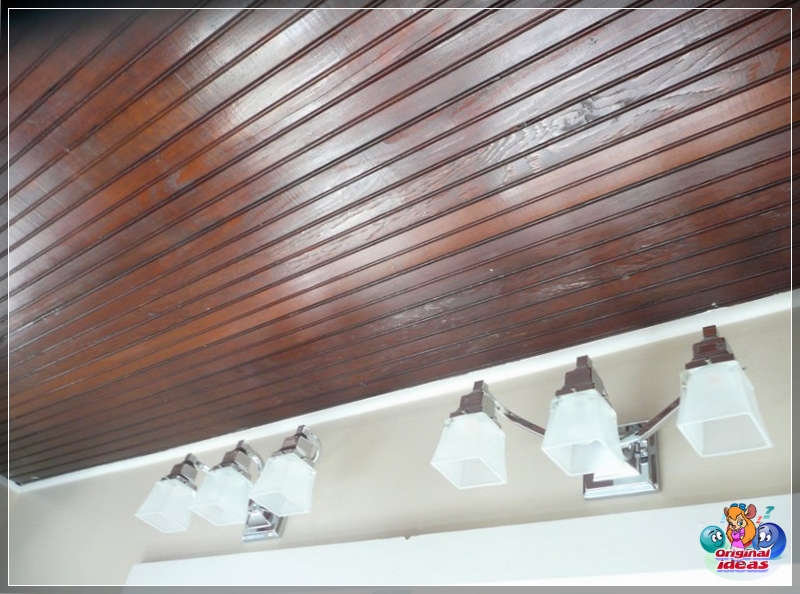
Developed veneer wallpaper that can be used to paste over the ceiling.
How the design is ensured
Various design techniques are used to give originality and attractiveness to the wooden ceiling. Natural wood itself has a beautiful appearance, but it should be developed and enhanced. The design of the ceiling depends on the type of room, size and general style of decoration of the entire interior.
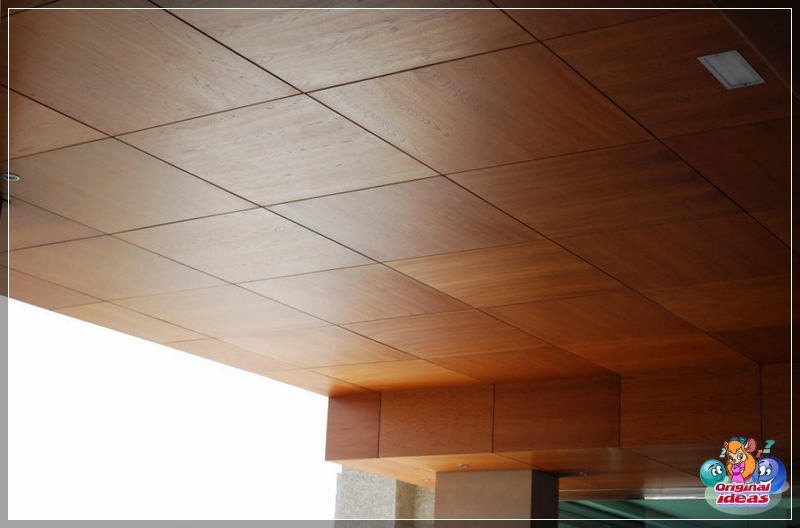
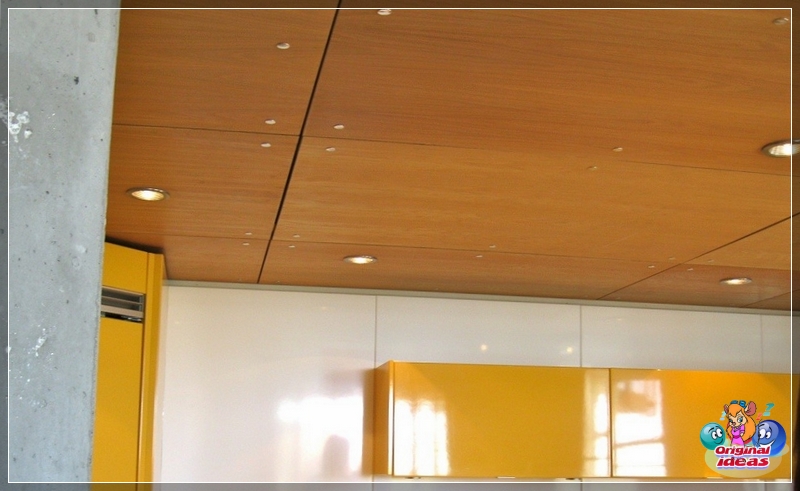
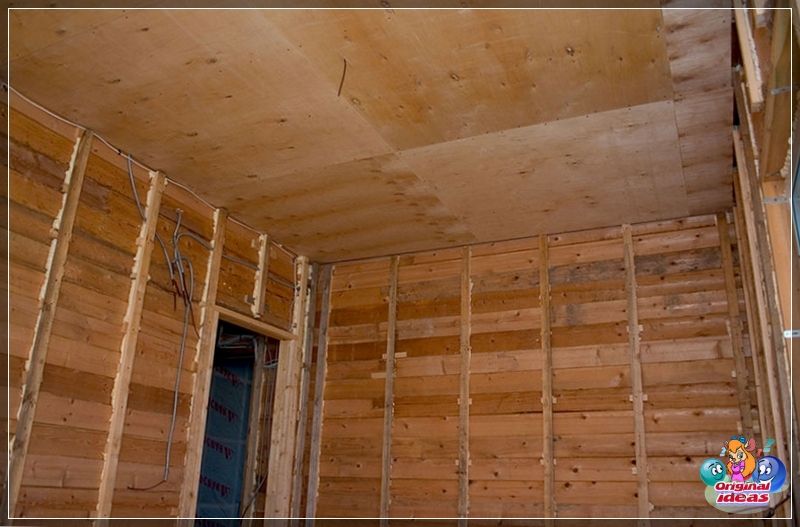
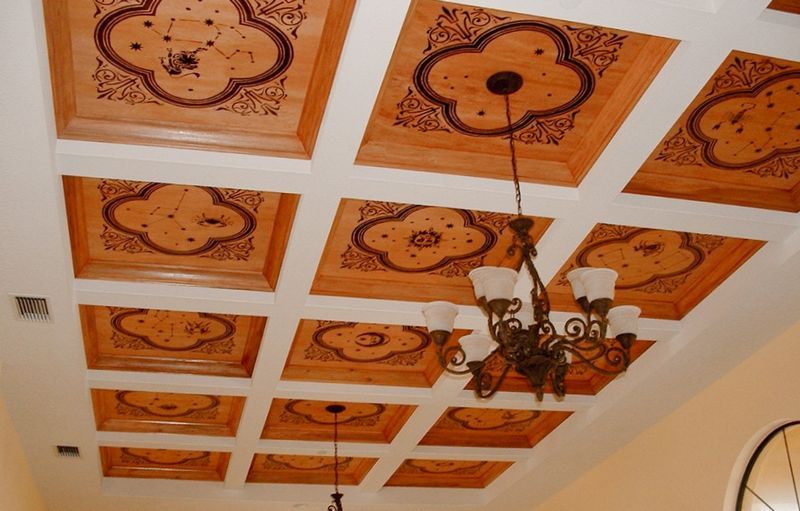
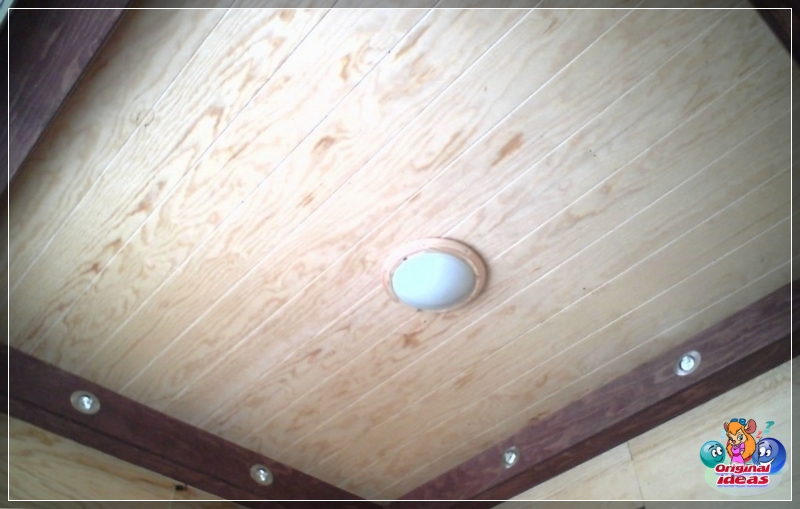
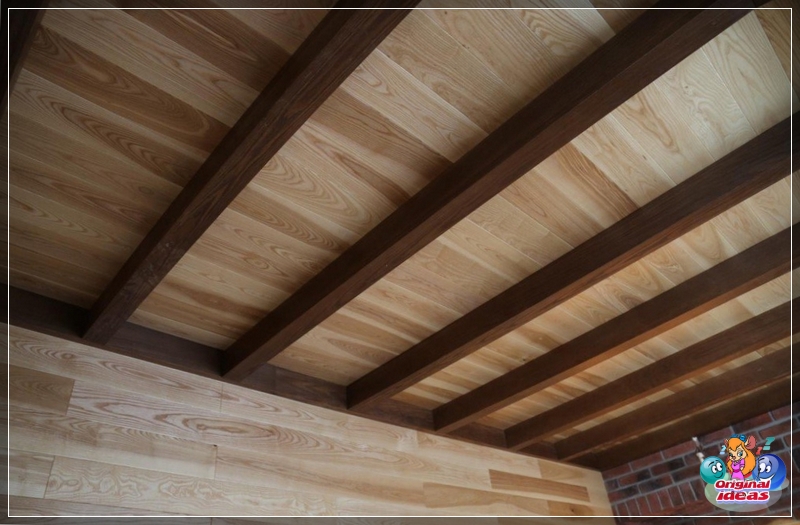
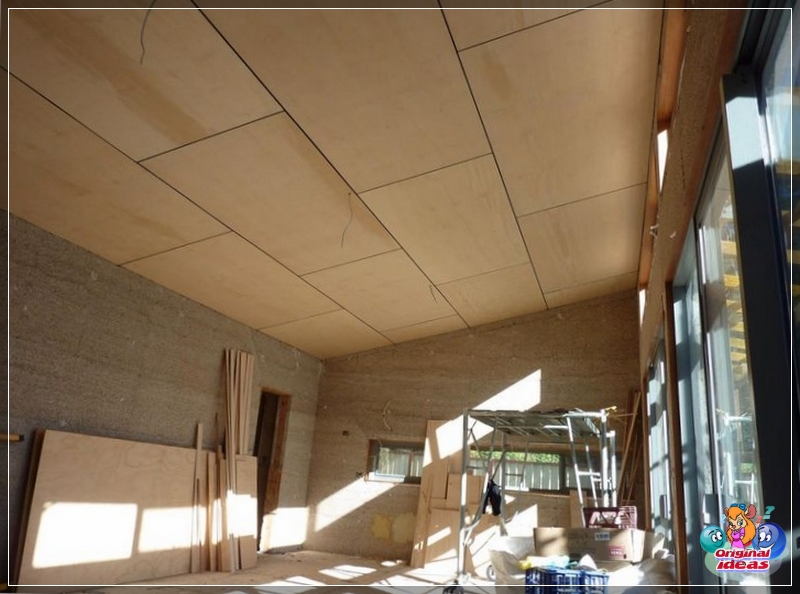
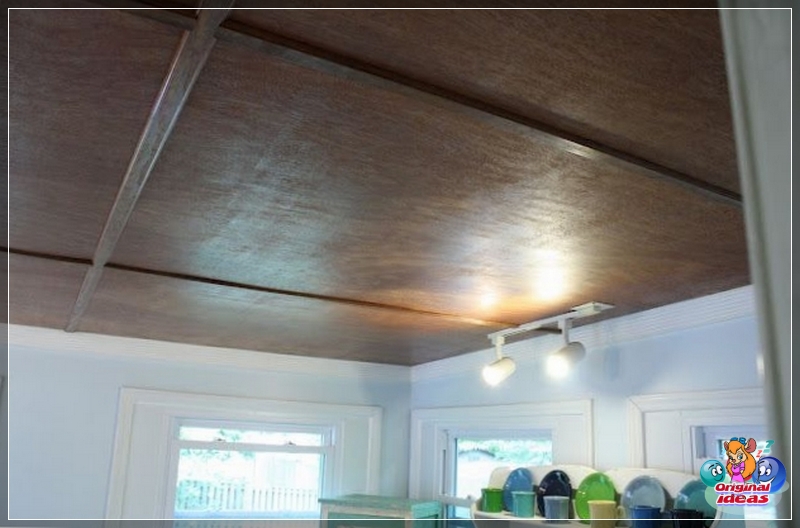
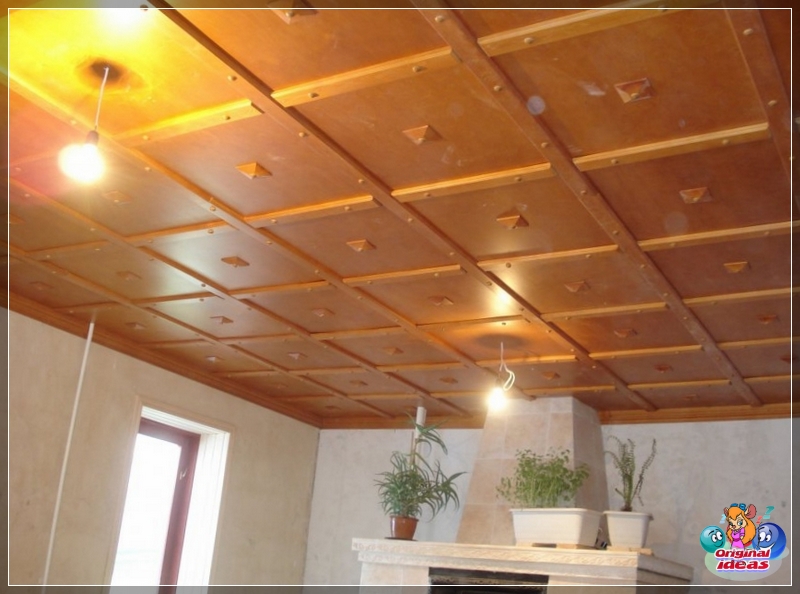
The appearance of the ceiling is largely determined by the texture of the wood. Each type of wood has its own shade of color and texture, which forms a characteristic pattern on the surface. Among hardwoods, the most popular are maple, beech, alder, birch, oak, ash, walnut and cherry. Conifers are often chosen - pine, spruce, fir, larch, cedar.
Techniques for changing the appearance
To give the ceiling a special appearance, the following methods of wood processing are used:
Inexpensive wood ceilings are painted. In modern interiors, white is used, which can be used to paint the ceiling in the living room, bedroom, kitchen, loggia, veranda.
Styles of design
Wooden ceiling suits many decoration styles. An example of using it in the interior (photo) shows how well it goes with the whole environment. When creating different design styles, you need to take into account some of the nuances:
Modern styles (hi-tech or modern) are based on clear lines and fashion trends. The wooden ceiling is not quite right for them. If, nevertheless, this option is used in a country house, then sharp color contrasts should be achieved with maximum simplicity of design.
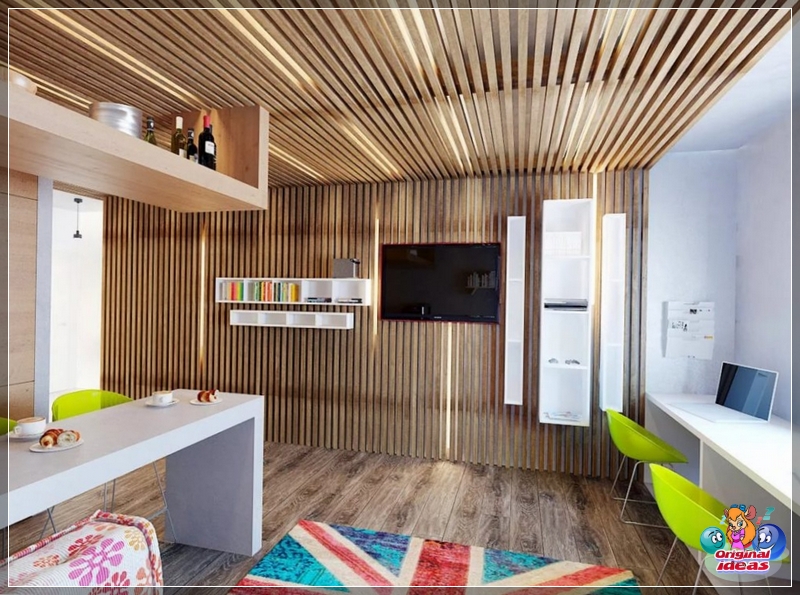
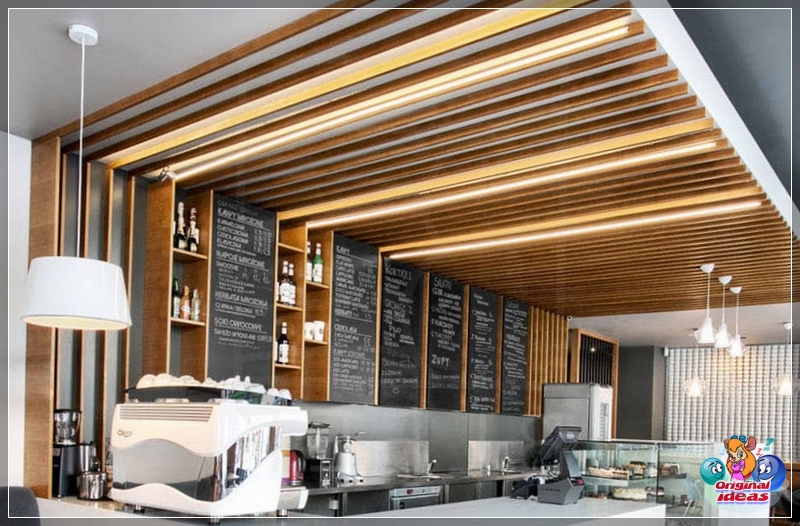
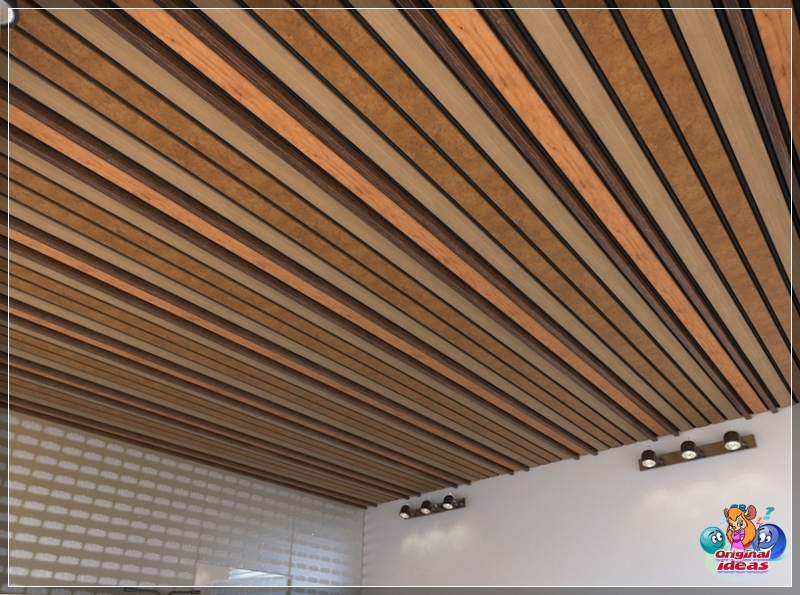
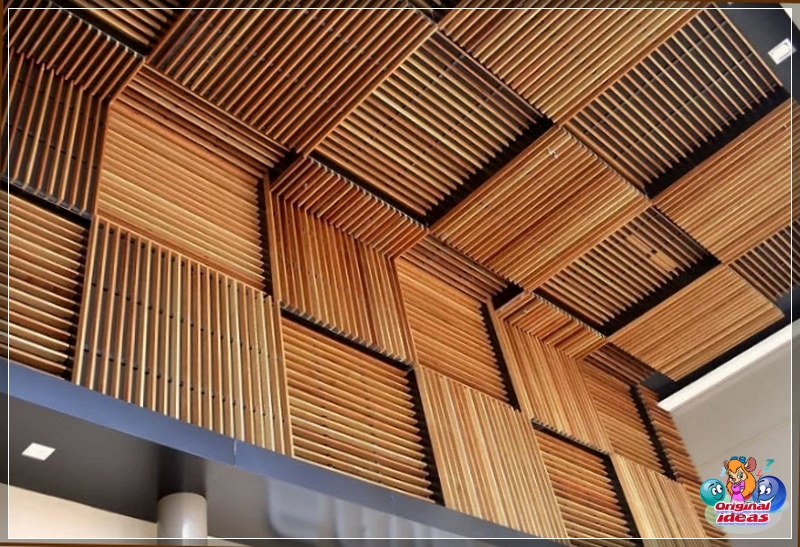
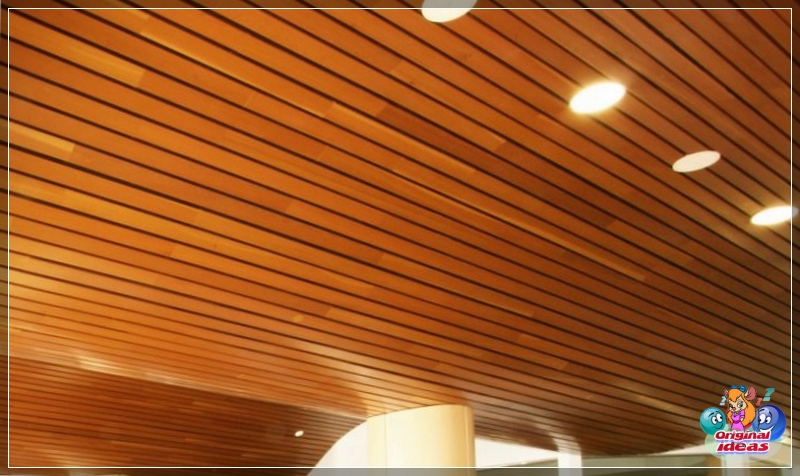
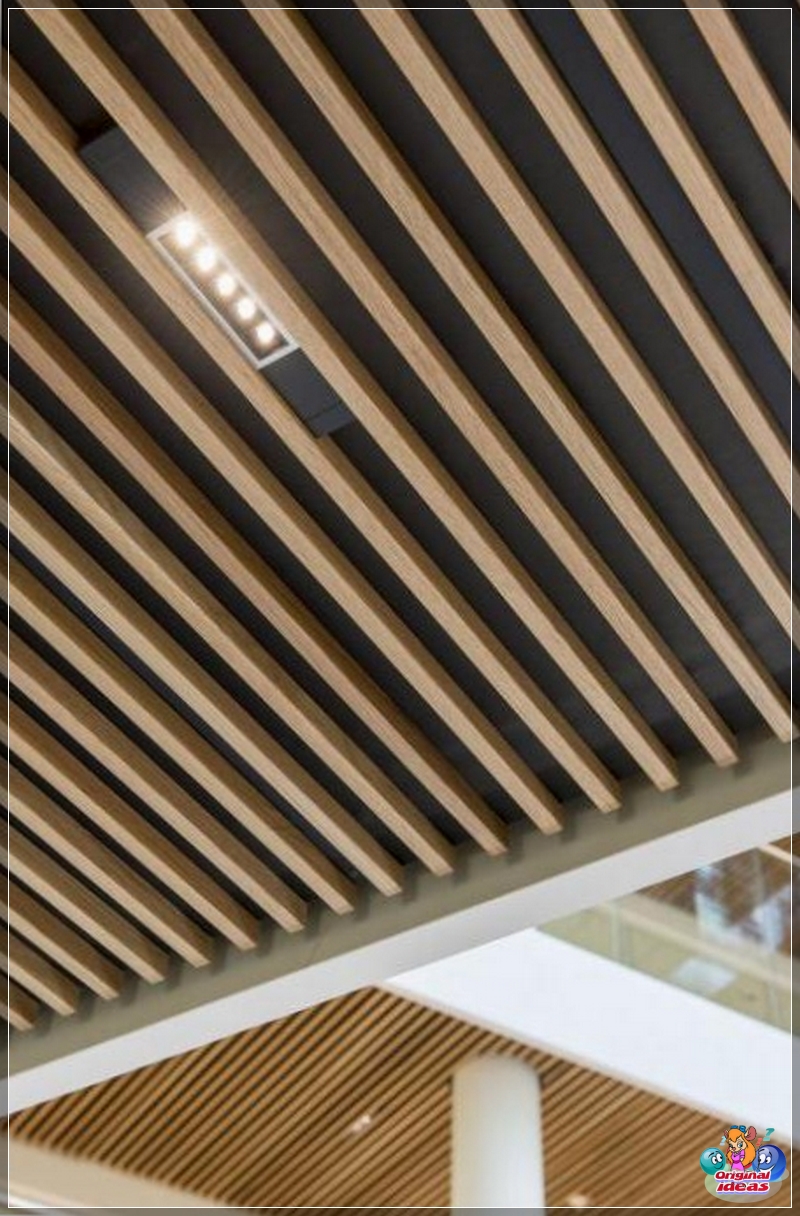
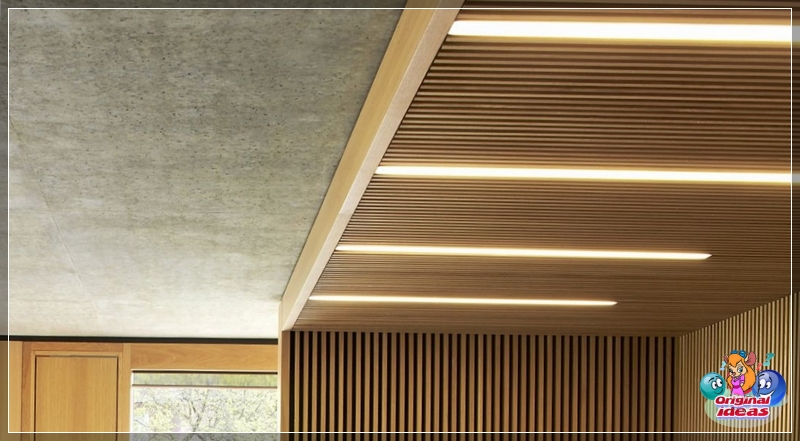


Conclusion
From time immemorial to the present day, wood has been successfully used for finishing ceilings. Such designs are more suitable for private houses and summer cottages, but they also look great in city apartments. An attractive design and reliable system can be created by hand, and a wide range of wood finishing materials makes the task easier. It is important to consider that a wooden ceiling in any room should be in harmony with the design of the walls, floor and style of furnishings.

